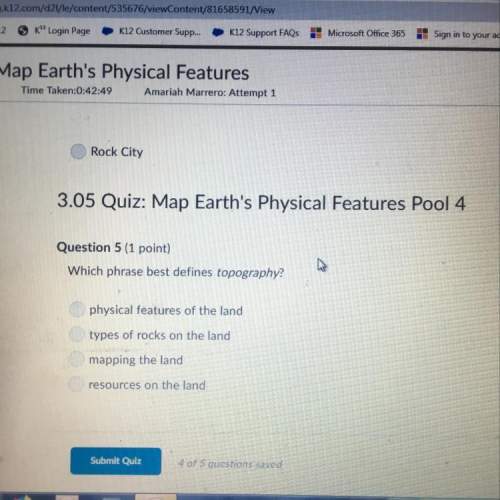
Chemistry, 16.04.2020 05:01 bosskid361
Given 3.4 grams of x compound with a molar mass of 85 g and 4.2 grams of y compound with a molar mass of 48 g How much of compound xy can be generated 2x + y2 = 2xy

Answers: 2
Another question on Chemistry

Chemistry, 22.06.2019 00:30
Microtubular fibers that assist in the movement of chromosomes during nuclear division in conjunction with proteins, makes up the small and large organelle pieces that assemble prior to translation three-base nucleotide sequence that can complementarily pair with the functional transcript, allowing a particular material to be brought to a ribosome particular time in the cell cycle when the cell’s systems determine if the cellular conditions are appropriate to continue through the cycle time in the cell’s cycle when proteins are made and organelles are duplicated enzyme that allows proper nucleotide bonding during transcription specific dna sequence which will initiate gene transcription division of the cell’s cytoplasm specific bond that forms between two amino acids when a carboxyl group binds to a amino group three-base sequence that does not code for a particular amino acid a paired organelle which facilitates the formation of movement microtubules time in the cell’s cycle when the microtubular structures exert an equal pressure on the cell’s genetic material
Answers: 2

Chemistry, 22.06.2019 12:30
Nebulae are enormous clouds in outer space. they are made mostly of hydrogen gas, helium gas, and dust. some nebulae glow brightly, while others do not. the stars that people see are huge, bright balls of glowing gas. they are made mostly of hydrogen and helium. which statement correctly describes other ways in which nebulae and stars are different? a. stars can form inside a nebula but a nebula can never be produced by any star. b. a star always has a higher density than a nebula. c. stars can never form inside a nebula but a nebula can be produced by any star. d. a nebula always has a higher density than a star.
Answers: 3

Chemistry, 22.06.2019 17:30
In a heat of an engine, if 700 j enters the system, and the piston does 400 j of work what is the final internal (thermal) energy of the system if the initial energy is 1,500 j
Answers: 2

Chemistry, 22.06.2019 18:00
The fact that the total amount of energy in a system remains constant is a(n)
Answers: 1
You know the right answer?
Given 3.4 grams of x compound with a molar mass of 85 g and 4.2 grams of y compound with a molar mas...
Questions


Mathematics, 17.02.2021 23:10

Social Studies, 17.02.2021 23:10



Mathematics, 17.02.2021 23:10

Mathematics, 17.02.2021 23:10





Mathematics, 17.02.2021 23:10

Mathematics, 17.02.2021 23:10



Health, 17.02.2021 23:10

Mathematics, 17.02.2021 23:10






